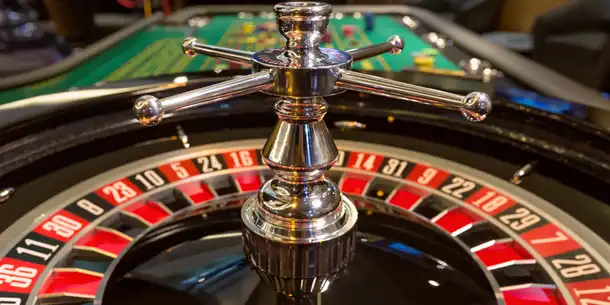The casino is an entire world in itself. There are no windows or clocks, but flashing lights and the sound of spinning coins and clicking buttons are all that you will hear. The crap table is another attraction that draws people to the slot machines. Televised Texas Hold’Em tournaments have raised the stakes in poker. This is entertainment, recreation, fun diversion, escape from the everyday and a chance at beating the odds for the majority of gamblers. Others, which is about three percent of the adult population consider it an addiction and an endless rollercoaster of excitement, despair, and joy.
One of the most common characteristics of any addiction is the fact that repeated behavior can lead to many negative consequences. Pathological gambling is an example of this. Someone who has compulsive gambling will often suffer severe financial and relationship problems before they seek help. His or her life could be in chaos.
Compulsive gamblers often believe that the next round will save them. If the numbers are correct, the money or credit won can be “invested” again. Gambling addiction is not a new phenomenon. However, electronic poker and the lightning speed of modern slot machines as well as Internet gambling has actually increased the time it takes for people to gamble.
Like other addictions, pathological gambling is both a psychological and biological disease. Although we don’t yet know everything that causes gambling addiction, many of these factors include psychological, social and family elements. The brain neuropathways that control the brain’s mechanisms can be affected by an individual’s perceptions of rewarding experiences. Gambling may be a way for an individual to escape from their pain.
We have seen 15-20% of patients with cross-addictionive disorders such as addiction to alcohol or drugs that combine problem gambling and drug dependence. According to some estimates, 35 percent of people with substance abuse or dependence have also met the criteria for pathological gaming at one time in their lives. The South Oaks Gambling Screen (SOGS) is an accepted psychosocial diagnostic tool that can be used to diagnose a gambling problem.
Both gambling addiction and substance abuse can progress to progressive diseases. They may include inability to control impulses to use or gamble, denial, anxiety mood swings, depression, and the desire for immediate gratification. Like chemical dependency, gambling can provide euphoric highs that are often followed by emotional valleys, remorse, and shame. Gambling is different from substance addiction in that an alcoholic or drug addict doesn’t believe that the substance can help him recover and solve his problems. A compulsive gambler believes that the Big Win will fix all of his problems.
Gambling addictions can lead to symptoms like blackouts, sleep disorders, and hopelessness. Compulsive gambling can lead to divorce, work and relationship problems, as well as arrests. Compulsive gambling can lead to a person’s overall health being neglected. This includes medical conditions that were ignored. Gambling addiction can lead to dysfunctional families that are centered around the addict. Emotionally and physically neglected children can be affected. Studies show that children who are pathological gamblers have a tendency to become addicted long-term.
It is crucial that gambling and chemical addictions are treated together. Gambling addiction, like chemical dependency, is treated holistically using the Twelve Step Philosophy. The treatment is individual and considers gender and age.
Gaming: Is it worth the risk?
Experts, such as Dr. Henry Lesieur from St. John’s University in NY, who coauthored the SOGS screening assessment and believes it’s not about money. However, money can become a major issue. Many people find the main motivation to take action. It may feel similar to taking cocaine, being active can be a high. Habitual gamblers use the term “Chasing Losses” to describe their attempt to recover gambling losses through winning. Action gamblers like to gamble at racetracks, casinos, and other venues that are “live”. They are often referred to as “high rollers” by casinos and receive comped meals and rooms. Some gamble to get action, while others use compulsive gambling as a way to numb their emotions, making it a temporary escape.
Gender and age as factors
In 2002, University of Connecticut Health Center psychiatrists conducted a study that evaluated the gambling behavior of patients seeking treatment. They found significant differences in terms of gender and age in pathological gamblers. The middle aged (age 36-55), and older gamblers had a higher percentage of women (45-55 percent) than the younger gamblers (18-35%) at 23 percent. Older women and middle-aged women don’t gamble regularly until they are 55 years old, while older men report a long-standing gambling habit. Surprisingly, women also wagered the most in the first month of treatment. The most serious problems reported by younger gamblers were those related to substance abuse and social and legal issues. However, older gamblers had more problems with employment.
There’s hope for recovery
Like other addicts, pathological gamblers can and will recover. Cognitive Behavioral Therapy can be combined with Rational Emotive Therapy to change unhealthy thoughts and behaviors. Dialectical Behavioral Therapy helps people to live life on their own terms, rather than escape from painful emotions and compulsive addictive behaviors.
The holistic approach to addiction treatment is one that takes into account all aspects of the person. For impulse control and ongoing support, it is important to continue care. A professional financial advisor may be required for a recovering gambler. Family therapy can help build a healthy, supportive family to support continued recovery.









